Tibetan raspberries - an unusual berry culture from Japan, which is only gaining its popularity from our gardeners. Europeans have long appreciated the peculiar taste and appearance of the fruits, the decorativeness of the leaf of the shrub and are happy to grow eastern guests on their summer cottages. Tibetan Malina attracts its unpretentiousness in cultivation and winter hardiness. Low magnificent bushes, thick covered with large coral berries, decorate the garden and bring excellent harvest of fragrant and delicious fruits. What varieties of Tibetan raspberries are most popular among gardeners, and how to grow it correctly, read further.
Malina Tibetan: variety description
- Tibetan raspberries (Rubus Illecebrosus) refers to the stem referee and the family of pink. Botanical culture name - raspberry seductive or rolling. Sometimes it is called strawberry or strawberry-raspberry.
- Tibetan raspberry bush - thick, 60-70 cm high, spherical shape. Thin and flexible shoots are covered with spines, external shrubs look like blackberry thickets.
- The light green leaves of Tibetan raspberries have a decorative and attractive view - corrugated and gear along the edge, on the touch rough, easily glued to clothes like a plaster.
- Flowers raspberries are large white, sometimes with a creamy tinge with flowers that are single or inflorescences on the tops of shoots. In the structure of the flowers resemble the flowering of strawberries, consist of 5 petals.
- Tibetan raspberry berry is large (up to 5 cm in diameter) and bright, red and coral colors, inside the hollow and easily separated from the color, has a sour-sweet taste, without a saturated fragrance, like ordinary raspberry. Fruit culture from mid-summer to autumn cold.
- The root of the strawberry raspberry creeping, quickly and actively growing, giving a rich young piggy.
Despite the fact that strawberry raspberries and our usual raspberries belong to one genus, the following differences exist between them:
- The Tibetan raspberry at the end of the season completely dies the ground part. Spring bush drives out a young piglet. The crop is formed on the shoots of the first year of vegetation.
- The flowering and fruiting of Tibetan raspberry is solitary. Flowers and berries are formed on the tops of the shoots and do not form brushes.
- The fruit of Tibetan raspberries is much larger than ordinary raspberries and looks like strawberries, and the attachment to the colorful, like raspberry.
- Malina Tibetan strawberry fruits throughout the entire period of vegetation, but has a smaller yield than the raspberry.
Tibetan Malina: Landing
For a good yield of strawberry raspberries, the task of the garden - choose the right place to plant seedlings, it is worth considering the following factors:
- Tibetan raspberry variety is unpretentious to illumination, so the shrub can be planted in a half, under the crown of trees, and on the sunny side of the garden.
- The optimal soil for the cultivation of the Malinnik will be driving soils or a soup soil with an alkaline or neutral reaction.
- When choosing the area of \u200b\u200bthe garden for thickets of raspberries, it is worth remembering that the berry culture is very quick and actively growing. For one or two years, the bush is able to grow up to two meters in diameter.
- Raspberry Tibetan volatile does not endure moisture stagnation, so it is necessary to follow the level of groundwater level and choose the sublime areas of the garden or with a slight bias. Especially dangerous for the Tibetan raspberry of the depressions on the site, where the snow does not come together or the rainwater is accumulated. If the probability of stagnation of moisture in the ground exists, it is recommended to see the drainage layer in advance when planting seedlings, dig up the grooves for removing excess water or lift the bed, making them elevated.
How to plant Tibetan raspberry
Experienced gardeners are recommended to plant a warehouse raspberry at the beginning of autumn from September 15, the landing time is extended until the end of October. Buy Tibetan raspberry saplings can be in the shop for gardeners. When buying, you need to pay attention to the root system and the trunk of a young escape. Yellow twisted raspberry leaves, damaged or frying root say that the seedling is unsuitable for planting, as it may not be worried.
Given the fact that Tibetan Malina gives a thick piglet and quickly occupies a new area of \u200b\u200bthe territory, ousting all its "neighbors," before landing it is necessary to limit the site under its breeding. To do this, roll into the soil, along the perimeter of the area allotted under the landing of the Malinnik, to a depth of 40-50 cm, suther pieces, linoleum, metal sheets. A peculiar underground edge will become an obstacle to grow radiating. If you do not take care of it before landing, it will be much more complicated later to fight thick thickets.
Tibetan landing scheme:
- Tibetan raspberry seedlings are planted with even rows, which will allow you to get to Malinka during the harvest when the bushes grow out. The optimal distance between rows of 0.5-0.7 m. After two rows, it is necessary to take a passage, and then again plant new two rows of raspberries.
- Planting seedlings from each other is necessary at a distance from 0.5 to 1 meter. In the first year, the raspberry bushes will look neat and isolated from each other. Already on the second or third year, when the ground part creates, the plot will cover with lush thickets of the raspberry Tibetan, which will give a high harvest.
- The depth of the landing pit must be at least 30 cm.
The reproduction of Tibetan raspberry
Tibetan raspberries, to buy saplings of which it is not difficult, also multiplied with cuttings, rhizable process and root pattern. Some gardeners practice a time-consuming and a longer seed method of breeding.
Landing of Tibetan raspberry with cuttings
The reproduction of Tibetan raspberry with green cuttings is a time-consuming and long-term method of producing seedlings. The best period for the shilling of the warehouse raspberry is autumn, after harvesting. It is enough to cut young, strong shoots, shorten the cuttings of up to 20 cm (crop part of the escape from above and below) and leave 2 top leafs. After preparation, the cuttings must be placed in the water for a day, in which the growth stimulator is added (corneser). After a day, the stalks can be planted in loose, fertile soil, under the film. The temperature in the greenhouse should be high enough from 24 to 26 degrees. Field of rooting Young seedlings can be transferred to a permanent place.
Landing Tibetan Raspberry Rhizome Sprouts
The available method of reproduction of Tibetan raspberry, which does not require large hassle - reproduction of rhizable sprouts. Given the fact that the raspberry bush quickly forms a sharp and grow up, you need to choose a strong escape that comma over the summer. It is desirable that the escape is as far as possible from the uterine bush. It is necessary to beat the selected from all sides to the separation and dig it together with the root and a lump of land. Seedling separated in this way can be transplanted to another place in the garden.
The reproduction of Tibetan raspberry division of the bush
Upon reaching the bush of the raspberry of the Russian five-year-old age, it can be used to reproduce the root division into parts. Pumping a bush for fissioning the root can be early in spring or autumn after harvesting. After extracting the root from the ground, it is divided into parts, cutting the root of the shovel. Dellets with shoots transplanted in advance prepared pits.
Tibetan Malina: Care
Despite the fact that Tibetan raspberries is an exotic variety, culture unpretentious and does not take much time in care. But to obtain a high harvest, some features of growing this berry culture should be observed.
Watering Tibetan Rasina
Culture is demanding of watering and does not endure the dryness of the soil, to obtain a good crop, the Malinnik will have to be regularly, especially if the summer season was arid. The square meter of the square will require 10 liters of water. Also applied spraying bushes. From the lack of moisture, the fruits of Tibetan raspberries can crumble or will be dry.
Tibetan raspberry
Like all berry cultures, Tibetan raspberries must be fed. For spring dressing, a complex fertilizer is used for berry crops or fertilize the soil with ammonium sulfate granules, which simultaneously serve as a mulching material to maintain a moderate humidity of the soil. With autumn feeding to the ground, sulfur potassium is introduced, scattering powder fertilizer under the bushes, after harvesting.
Loosening and mulching of Tibetan raspberry
The roots of the raspberry surface, so loose and remove weeds under the bushes, with extreme caution, so as not to harm the root plant of the plant. Caring for raspberry bushes, do not forget that shoots are covered with spines, so use tight gloves in work. To prevent the soil drying, mulching is carried out, use a peat layer, leveling whether to compost.
Preparation of Tibetan Raspoon by Winter
Tibetan raspberries - winter-hardy grade, not requiring shelter in the winter. After the harvest is assembled, and the ground vegetative part of the shrub is dying, trimming branches up to 5 cm in height. Malinnik falls asleep for the winter layer of land.
Diseases and pests of Tibetan raspberry
For an exotic grade of raspberries are characterized by the same diseases that are striking and ordinary raspberries: anthracnose, chlorosis, rust. Timely weeding, thinning of bushes, feeding with complex fertilizers will help to avoid these diseases. Under the damage to the plant with these diseases, we use drugs with copper content.
Among the pests attacking Malinnik, allocate:
- Malino-strawberry weevil. The pest is powered by the flowers of raspberries, overlooking the flower, to remove his offspring. Flowers dry and fall, not having time to form an ovary, which significantly reduces the yield of the raspberry. For the fight against pest used fufanon. A solution that is divorced in a 5 ml ratio of 5 liters of water is necessary to spray the raspberries before and after flowering.
- Malnic beetle. It is powered by buds, raspberry leaves, laying eggs in them. In ripened fruits, the holes do the holes. To combat Malinous Beetle, during the bootonization of the plant, Alatar, Aktellik is used.
- Malinous Way. Attacks the tops of shoots, inflorescences, raspberry leaves, which leads to their twisting and slowing down the growth of shoots. The same drugs help to fight the threes.
Collection and application of crop Tibetan raspberry
Tibetan raspberries fruits from mid-summer to the first autumn frosts. Berries are collected by ripe, unworthy fruit do not have a taste and aroma. Ripe raspberries - bright, soft to the touch, with an acidic taste and a pronounced raspberry aroma. Only after thermal processing of the berries of Tibetan raspberries acquire a subtle taste and aroma of strawberries. To collect ripe fruits it is better to use containers to not deform the fruits.
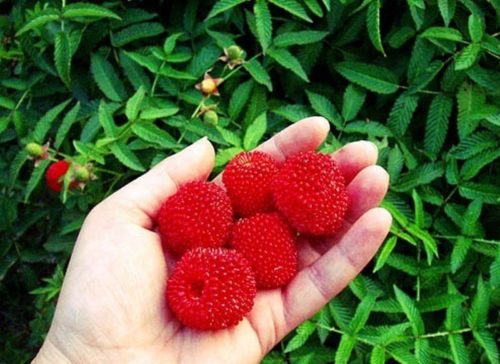
Strawberry raspberries can be used both in the fresh form - fluttering with sugar and cooking jam, jelly, jams and compotes from it. Europeans use Tibetan raspberries in the preparation of vegetable salads, where it shall the taste of dishes and gives freshness and piquancy. In addition to taste, the berries of Tibetan raspberries have therapeutic properties, they strengthen the vessels and increase the hemoglobin in the blood. Also, the fruits of strawberry raspberries are the excellent prevention of influenza and ARVI in the cold season. Since low-calorie berries, they are recommended to include in the diet to people who follow their weight.
Tibetan Raspberry in Landscape Design
Tibetan raspberry found application in landscape design. Quickly growled, the bushes create an impassable living elevation, which can be used when zoning a garden or garden. No small rodent can peel through thick and spiny shoots.
The decorative leaves of Tibetan raspberries are beautifully combined in coniferous trees compositions. Beautifully looks like raspberry bushes on alpine hill or green lawn. When making a plot, do not forget about the rapid growth rates of the shrub.
Barbed green beauty with red large berries in combination with white flowers - fascinating spectacle and garden decoration, which will delight you harvest until late autumn.

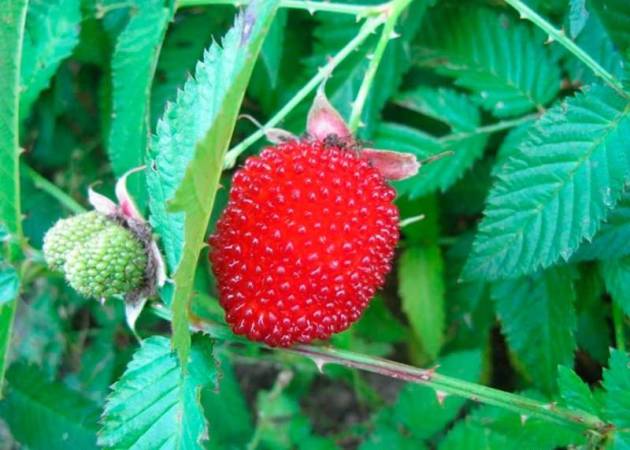
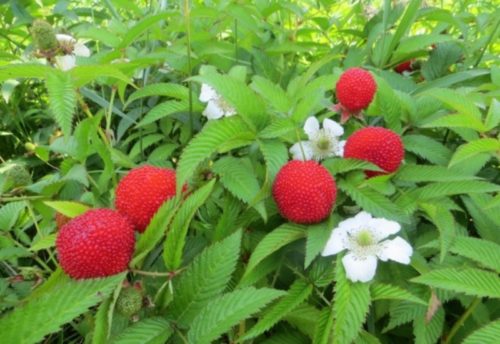
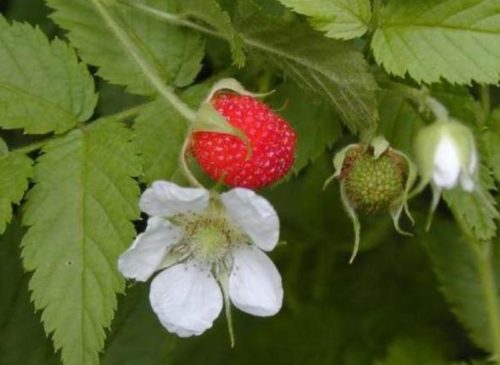

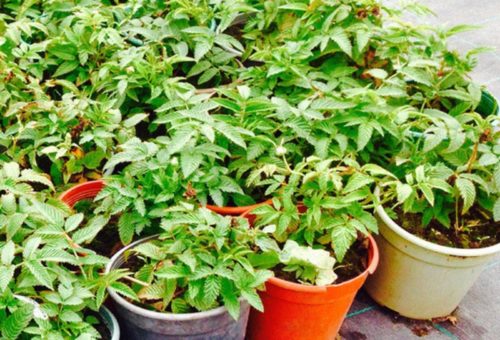
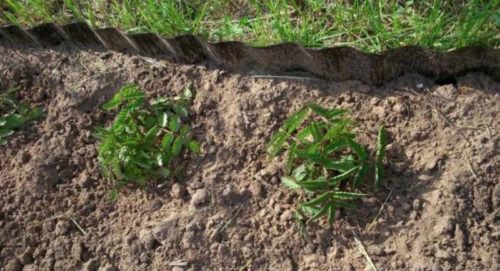

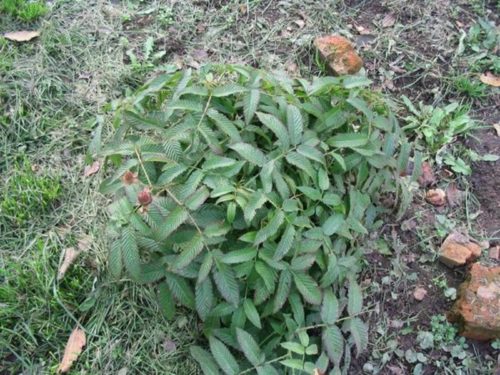
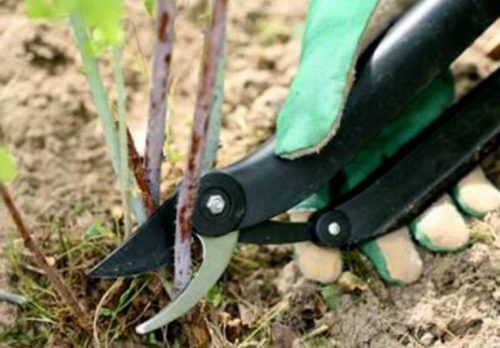
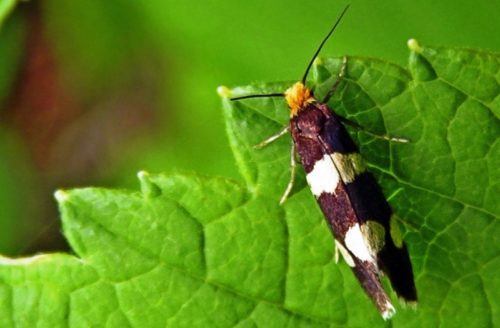
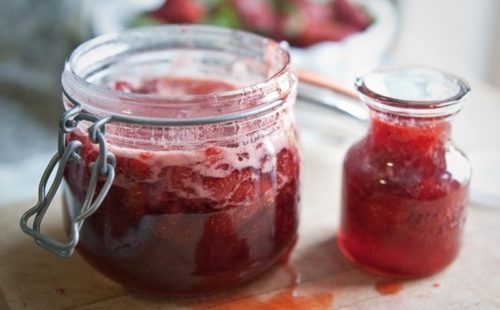
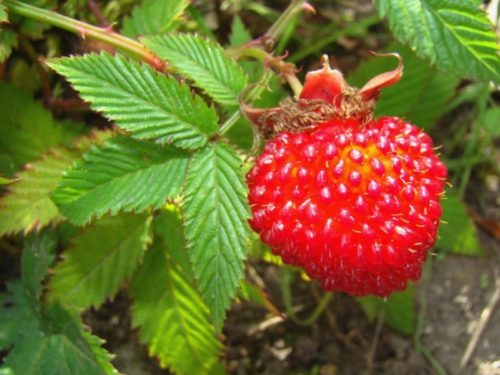
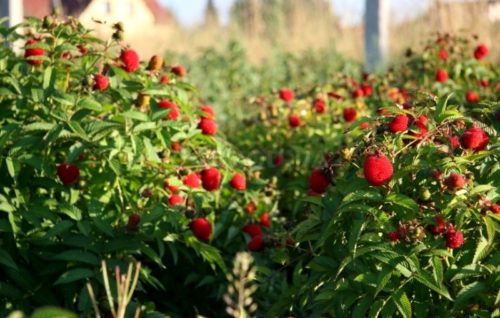
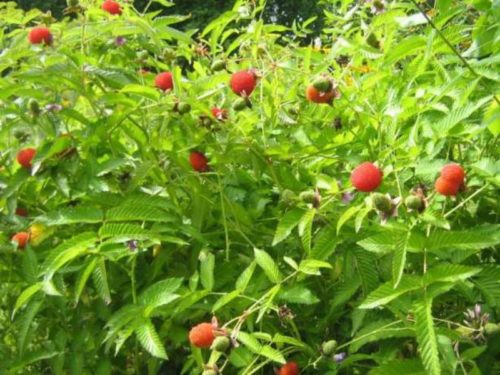
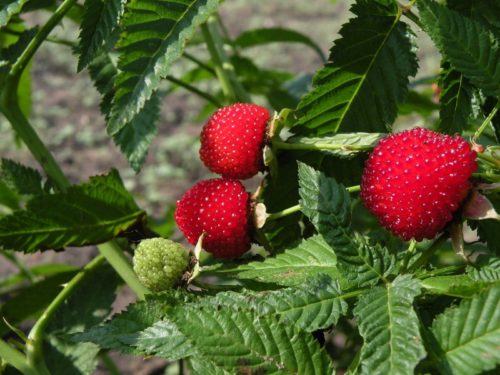
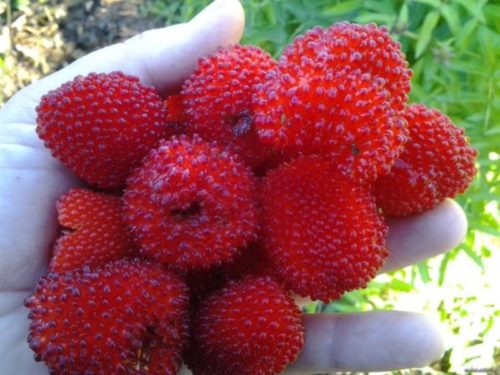












 Start a discussion ...
Start a discussion ...